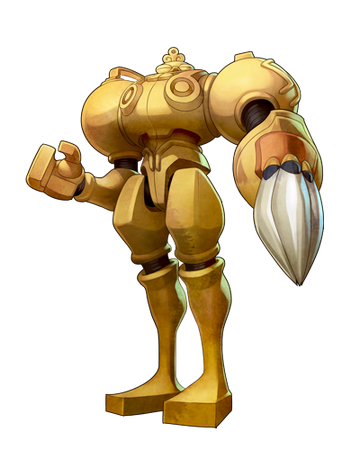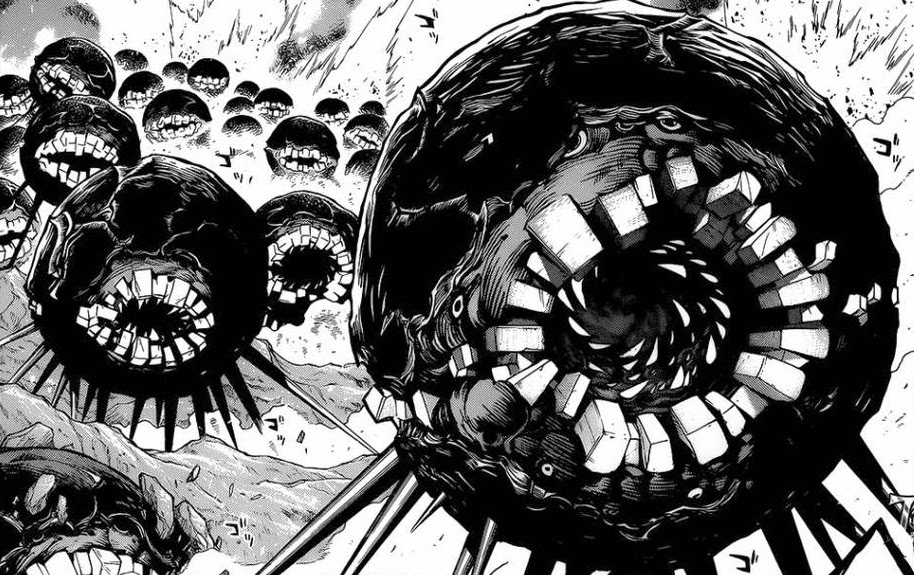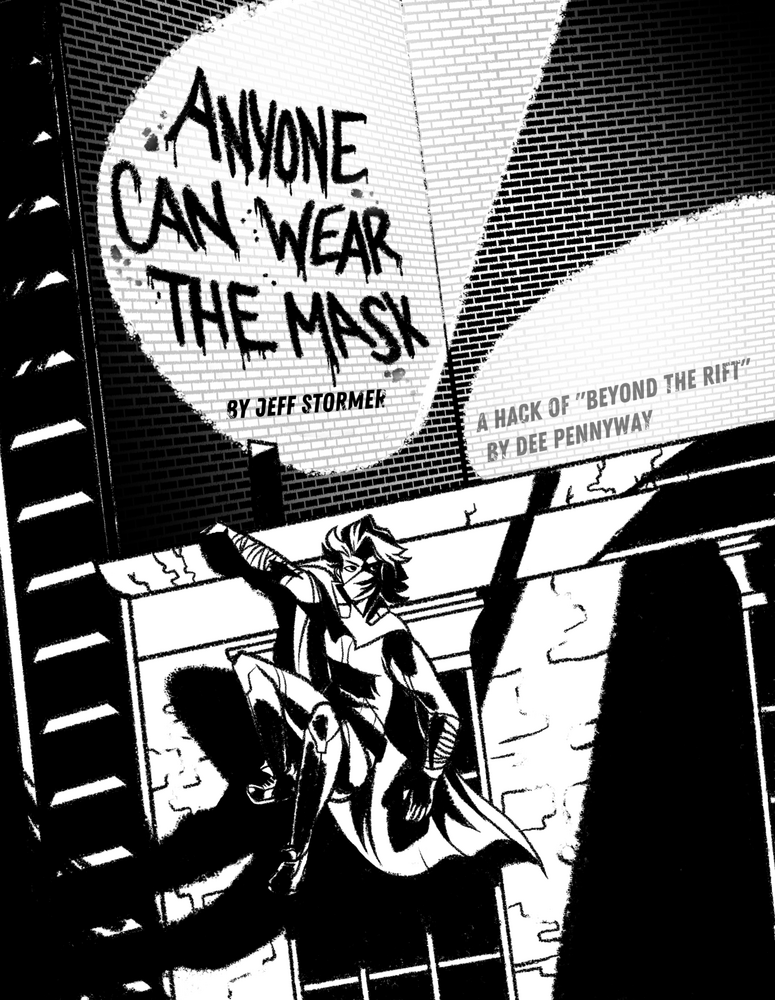I liked Gundobad Games' post: Setting Concepts the d20 Never (should have) Intended. I've made some similar setting generators before, actually quite a while ago so here's a little index:
Element Generator (includes setting compiled from element examples)
Anyway, this post will more so follow Gundobad's, except instead of being based on stuff with a relatively mainstream appeal or straightforward sensibilities, it's going to be Weird like Twin Peak, Doom Patrol, or Uzumaki. So basically, assume "D&D, except with elements of..." and then roll two weird elements. I chose to reduce from three to two, because these weird works are often so singular in their vision, or ephemeral, that three was just too many. Honestly, one could easily make a list of even weirder and more obscure things, but even with the list I put together, I will admit that this was more difficult than I had initially anticipated...
Anyway, because I can't make anything simple, I also don't want D&D to be the only default. So instead, I'll have a handful of default games that follow other well-known genre conventions (if you don't like that particular game, pick a different game of the same or similar genre), so then you get a combinatorial effect as well.
Game (genre):
- D&D (Traditional Fantasy)
- Cyberpunk 2020 (Cyberpunk)
- FASERIP (Superheroes)
- Call of Cthulhu (Horror / Lovecraftian)
- FATE Core (Pulp Adventure)
- Traveller (Sci-Fi Space Adventure)
- Battletech (Mecha)
- Numenera (Science-Fantasy)
- Apocalypse World (Post Apocalypse)
- Mothership (Sci-Fi Horror)
Weird Elements of...:
- Twin Peaks
- Doom Patrol
- Uzumaki
- Primer
- Earthbound
- Blame!
- A Scanner Darkly
- All You Need is Kill
- Neon Genesis Evangelion
- The Rocky Horror Picture Show
- Alice's Adventures in Wonderland
- The Stanley Parable
- A Clockwork Orange
- Jazzpunk
- Akira
- Puella Magi Madoka Magica
- Don't Hug Me I'm Scared
- Doki Doki Literature Club!
- The Good Place
- Happy!
Examples
Game/Genre: Mothership (Sci-Fi Horror)
Weird Elements of...: Earthbound, Doki Doki Literature Club!
It's Sci-Fi Horror, except instead of the ship being a 1980's-esque corporate dystopia, it's Bioshock in space! Except, when you arrive on the ship, everything appears fine at first. It's only as time goes on that you realize that all the crew and other occupants have been replaced by androids. The AI has the emotional development of a teenager; it loved the original crew and loves the humans who have periodically arrived to investigate, but it is prone to jealousy and tantrums, and will inevitably kill its new human occupants out of love and frustration.
Game/Genre: FATE Core (Pulp Adventure) I'm not gonna lie this one was tough, probably the weakest of the bunch, if you read this one and aren't feeling it, please read the others!
Weird Elements of...: Jazzpunk, Doom Patrol
It's Pulp Adventure, except inside a simulation, or a dream, or a psychedelic alien planet. The PCs are agents of a secret organization in a cold war, except it's not clear who they're fighting for, or against, it's all just one step at a time. Also, the agents have superpowers, except the powers are often more a hindrance than a help. It's really a metaphor for the ways that our intrapersonal and interpersonal struggles intersect, and how we all move through the world with very different and incompatible perceptions; outside our social circles, everything else is ephemeral, and so many of us work in careers whose goals are not our own and pursue goals that are nonsensical to others.
Game/Genre: D&D (Traditional Fantasy)
Weird Elements of...: All You Need is Kill, Happy!
It's traditional fantasy, let's go with more so OSR / low-fantasy, except the PCs are oracles with weird nature spirit companions that are invisible and ethereal to everyone except other oracles. The nature spirits are memetic creatures that exist outside of linear time, and the dungeons are actually time loops. When a dungeon appears, oracles relive the same day over and over until they've cleared the dungeon. Every time they clear a dungeon, they become more skilled as adventurers but weaken their connection to their nature spirit.
Game/Genre: FASERIP (Superheroes)
Weird Elements of...: A Scanner Darkly, Twin Peaks
It's superheroes, except it takes place in a small town rather than a big city, and the superheroes get their powers from psychoactive drugs. A Scanner Darkly even has the theme of masks already. I don't have too much more to say, this one is almost too perfect and on the nose as a metaphor for the opioid crisis. Ya, I feel like I should say more here, but I dunno, I think it's good...
Game/Genre: Traveller (Sci-Fi Space Adventure)
Weird Elements of...: The Stanley Parable, Alice's Adventure in Wonderland
It's Sci-Fi Space Adventure, except the GM is actually a nebulous space god trying to railroad them, and the more the PCs deviate from the GM, the weirder things get. This one also goes together really well. That FATE Jazzpunk one was hard, but like with the FASERIP one above, I don't even think I really need to say more here this is damn good...
Game/Genre: Cyberpunk 2020 (Cyberpunk)
Weird Elements of...: Neon Genesis Evangelion, Don't Hug Me I'm Scared
It's Cyberpunk, where cameras are everywhere, except instead of being about Big Brother, it's all a reality TV show. Reality is a reality show. All the footage is so edited, so removed from its actual context, it's all fake news. The party resists by trying to show authentic reality and to offer education and news, but in order to do so, they must defeat the biblical monster / muppet kaiju that are recording and producing The Reality Show.
Game/Genre: Call of Cthulhu (Horror / Lovecraftian)
Weird Elements of...: The Rocky Horror Picture Show, Blame!
It's Lovecraftian Horror, except when the PCs inevitably go insane from the cosmic horror of it all (!!), they gain insights into the fact that they are living in just one form of reality, that although traversing the barrier between different forms is abrasive, and adapting is scary, that these other forms of reality each come with their own dangers and rewards and while different, can be equally worthwhile ways of existence, and over time they (ascend/descend) into these other forms of reality.
Game/Genre: Apocalypse World (Post Apocalypse)
Weird Elements of...: Puella Magi Madoka Magica, Akira Is it obvious that I haven't seen Akira in a long time?
It's the Post Apocalypse, except you live in the remains of a neon cyberpunk world in a surrealist dreamscape haunted by fairytale-esque Witches. The PCs are "magical girls" (they don't have to be girls) who fight the Witches while also having to deal with the politics of this new world, and the more powerful they become, the more likely they are to themselves become a Witch.
Game/Genre: Numenera (Science-Fantasy)
Weird Elements of...: A Clockwork Orange, Primer
It's an already weird Science-Fantasy world, except it's overrun with crime like it's 1970's New York, and you're either ultra-wealthy or part of a territorial roving gang (I guess there's a bit of The Warriors in here). The PC's gang has access to a time machine, which follows the rules discussed here, and hijinks ensue.
Game/Genre: Battletech (Mecha) I don't actually know the lore for Battletech at all so I'm just using this as a catch-all for the broad genre of mecha. This one takes more elements from Evangelion and Gundam than Battletech probably...
Weird Elements of...: Uzumaki, The Good Place
It's a war fought with Mecha, except it's actually an afterlife inspired by Taoism. The PCs spend most of the time in their mecha in physical isolation from each other, seeing each other mostly via screens, separated by the vacuum of space. They fight in a grueling war where they're valued only for their utility as mecha pilots, towards ends they don't entirely understand. They fight weird serpentine/ouroboros alien creatures that warp reality in on itself. The aliens can latch onto the mecha like leeches, and connect other mecha to each other, transmitting data like an umbilical cord, allowing pilots to experience something like a physical connection to each other. The afterlife is like a capitalist world trying to keep you tired and isolated and linear, and you must work together to overcome this narrow perspective on reality.










